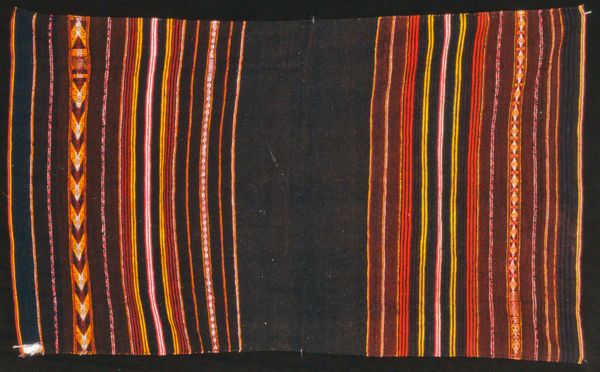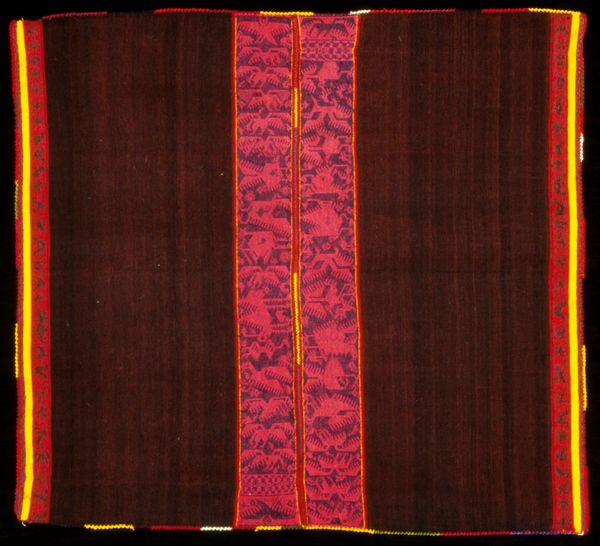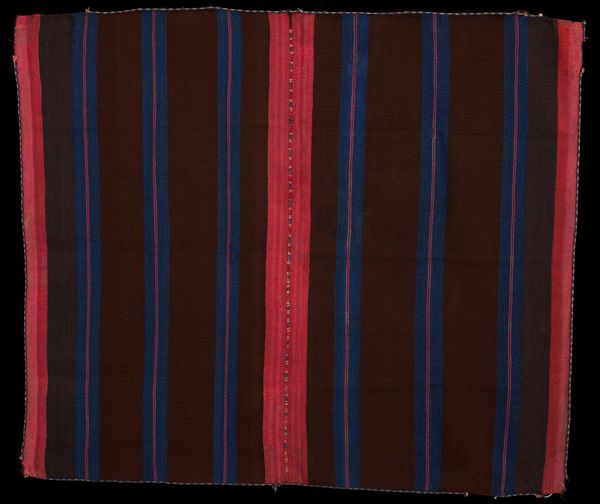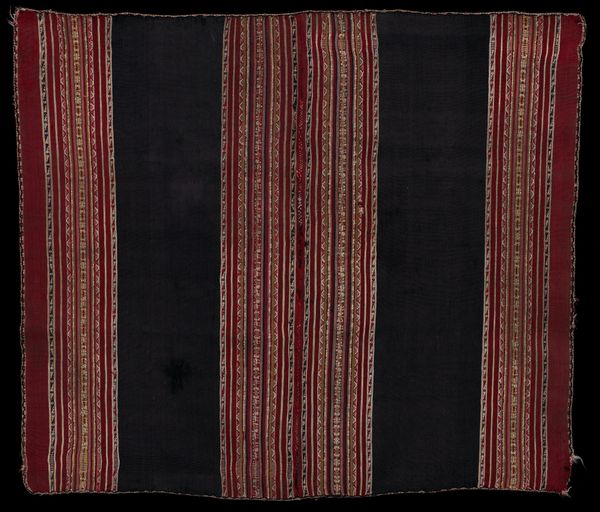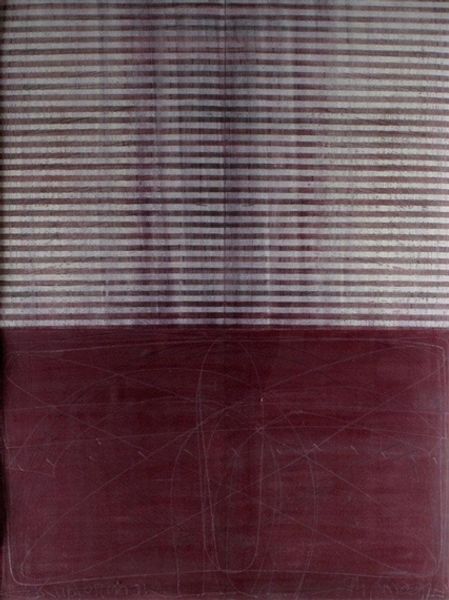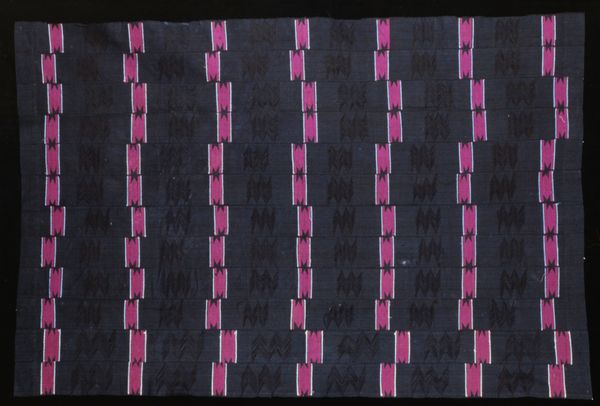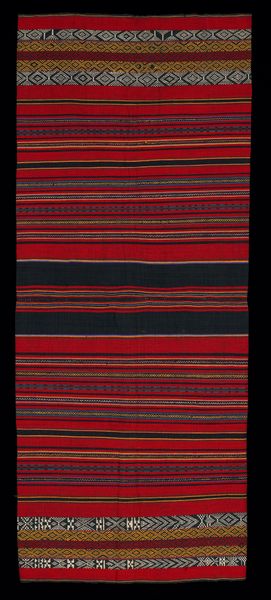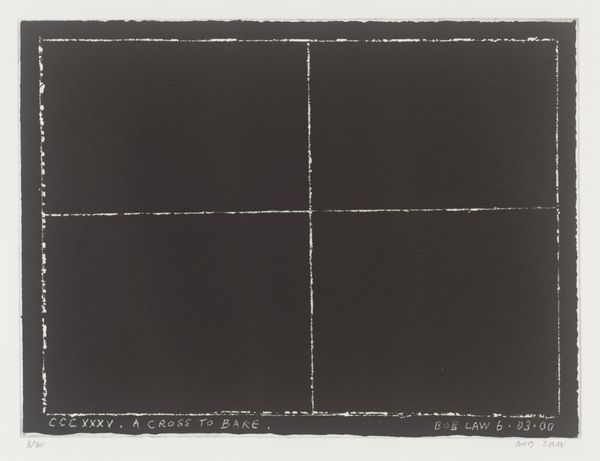
fibre-art, weaving, textile
#
fibre-art
#
weaving
#
textile
#
embroidery
#
geometric
#
indigenous-americas
Dimensions: 116 × 133.9 cm (45 11/16 × 52 5/8 in.)
Copyright: Public Domain
Curator: Right, let's talk about this striking "Overskirt (Urku)," made between 1850 and 1900 by Aymara peoples. It's a woven textile piece, largely wool, and currently held here at the Art Institute of Chicago. The dark expanse is immediately punctuated by these beautifully embroidered borders. What's your take on it initially? Editor: Stark, powerful, yet somehow reserved. It feels like a carefully guarded secret, a symbol, rendered in almost total darkness with just glimmers of light breaking through at the edges. There’s an immediate connection to land and place, and something ancestral. Curator: Exactly. The textile acts as a crucial form of Indigenous expression, communicating complex cultural narratives through those shimmering geometric patterns woven along the edges. Think of the meticulous work required to create this – the dyeing of the wool, the spinning of the threads, the countless hours on the loom… Editor: Absolutely. This isn't just decorative; it’s deeply functional and culturally significant. Overskirts like these signified status, identity, and belonging within Aymara communities. The very act of weaving was a form of resistance, preserving cultural memory in the face of colonization. The repetition of patterns becomes almost a code. Curator: And that deep black? Not just black, but an intentional, resonant darkness. I find myself wondering if it holds its own kind of story about what was withheld, what went unsaid during this period of weaving. It's almost brooding, wouldn't you agree? Editor: Brooding, yes, but also protective. Think about the ways dark colors historically signified power and even spiritual connection. The geometric bands flanking it almost feel like guardians, these sentinels holding the void together. They structure it, give it meaning. And each band probably represents a specific lineage, skill set, or understanding that went into the weaving process. Curator: And, in a funny way, even though this object hails from so long ago, that power is still so apparent, and those questions remain. What can we glean about cultural continuity and change by just looking at one piece? Editor: Precisely. This 'simple' overskirt reveals the incredible intersections of indigenous knowledge, resistance, and identity, materialized in threads. It encourages us to ask whose histories are made visible—and whose remain shrouded. Curator: So true. Looking at this today is an invitation. Editor: A powerful reminder of legacies woven through generations.
Comments
No comments
Be the first to comment and join the conversation on the ultimate creative platform.

